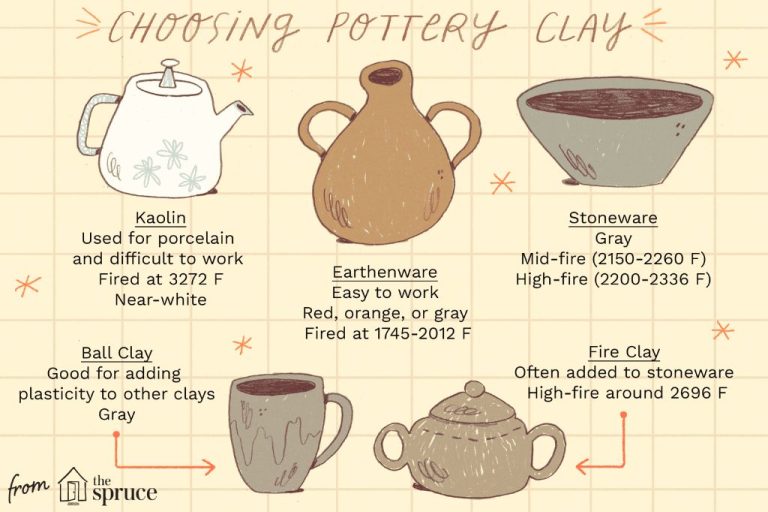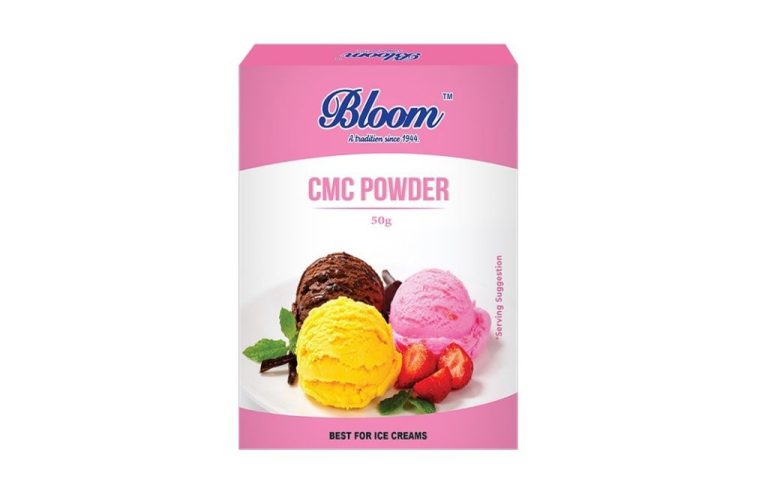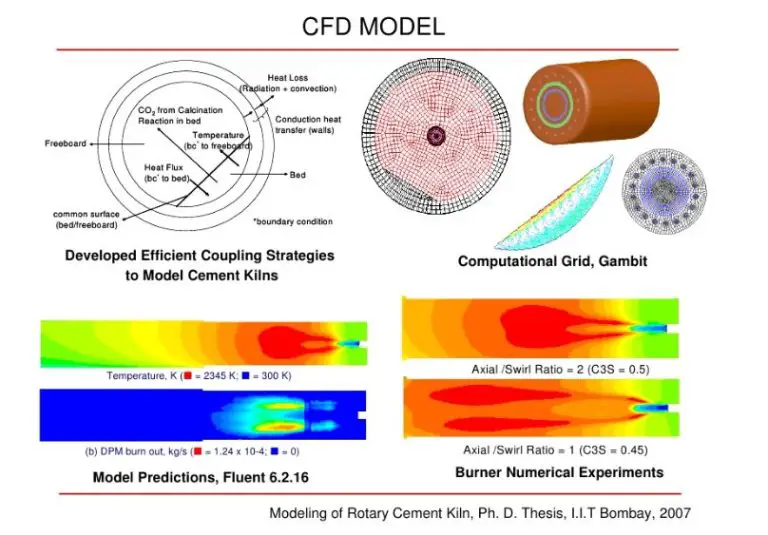What Clay Do People Use To Make Figures?
Clay figures and sculptures have been created by artists for thousands of years. Clay is an appealing artistic medium because of its versatility, affordability, and ability to be shaped into intricate forms. There are several main types of clay that are commonly used to handcraft figures, each with their own unique properties and characteristics.
The three primary clays for sculpting figures are earthenware, stoneware, and porcelain. Earthenware is the most basic clay body and fires at lower temperatures. Stoneware is stronger and more durable, firing at higher temperatures. Porcelain is the most delicate but graceful clay, requiring the highest firing temperature. In addition to differences in their makeup and firing requirements, these clays vary in their color, texture, and suitability for certain sculpting methods. While subtle, these distinctions impact the look and feel of the final fired piece.
This overview will explore the main types of clay used for sculpting figures, examining their key traits, benefits, and applications. With an understanding of the range of modeling clays available, artists can thoughtfully select the optimal material for their sculpting needs and artistic vision.
Clay Types
There are three major types of clay that are commonly used to make ceramic figures and sculptures: earthenware, stoneware, and porcelain. Each type has distinctive properties that make them suitable for different applications.
Earthenware is the most basic and common type of clay. It’s made from regular clay that is fired at lower temperatures, usually between 1000-1200°F. Earthenware is quite porous and absorbs water easily, making it softer and more prone to chipping and cracking. However, its porosity allows glazes to fuse well with the body.
Stoneware clay is fired at higher temperatures, typically around 2200-2400°F. This makes stoneware less porous and more durable than earthenware, with lower absorption. Stoneware has greater strength and resists chipping and cracking better. It also provides an excellent canvas for colored glazes.
Porcelain is the most refined and specialized clay type. It’s made from kaolin clay and fired at very high temperatures up to 2600°F. This makes porcelain non-porous, hard, and highly resistant to chipping, cracking, and wearing. Porcelain has a fine white color that allows for bright, crisp decoration. However, it requires greater skill to work with due to its delicate nature.
Earthenware Clay
Earthenware clay is one of the most common types of clay used for pottery and sculptures. It is very workable and flexible which makes it great for hand-building and wheel throwing. Earthenware has a firing temperature between 1000°F – 2100°F (538°C – 1148°C). It is porous and absorbs water which means items made from earthenware must be glazed to make them impermeable.
The properties that make earthenware clay appealing for sculpting figures include:
- Plasticity – it is smooth and flexible when wet making it easy to shape
- Low shrinkage – it does not shrink much during drying and firing so details are maintained
- Affordability – earthenware clay is readily available and lower cost than other clays
Earthenware can be fired at lower temperatures which makes firing more accessible. It comes in red, brown, and white colors. Figures sculpted from earthenware have an earthy, organic quality. Earthenware clay is commonly used by hobbyists and in sculpting classes because it is so versatile and easy to work with.
Stoneware Clay
Stoneware clay is an extremely versatile and durable type of clay that is commonly used for making ceramic sculptures and figures. It has several properties that make it ideal for sculpting:
Properties
Stoneware clay has excellent plasticity, allowing it to be pushed, pulled, coiled, and shaped without cracking or crumbling. It also has high wet and dry strength to maintain the sculptor’s work. The clay contains fine particle sizes and fires to a strong, vitreous product.
Uses
Stoneware’s durability, strength, and aesthetics make it a popular choice for sculptures, figures, pottery, tiles, and more. It is commonly used by hobbyists and professional ceramic artists. Many artisan figurines, garden statues, and decorative household objects are made from stoneware.
Firing Temperature
Stoneware clay requires high firing temperatures between 2,200°F and 2,400°F (1,204-1,316°C). When fired at these temperatures, the clay vitrifies and becomes non-porous. Glazes can be applied to stoneware before firing to create colorful, decorative finishes.
Porcelain Clay
Porcelain clay is made from kaolin clay that is fired at very high temperatures ranging from 2,200 to 2,500 degrees Fahrenheit. It results in a non-porous, vitrified and translucent ceramic that is white, hard and very dense. Some key properties and uses of porcelain clay include:
- It has very low porosity, which makes it impermeable to water.
- It has high strength and hardness.
- It has excellent thermal shock resistance, meaning it withstands sudden temperature changes well.
- It has excellent chemical resistance.
- It has high plasticity and workability for sculpting fine details.
- It can be used to make pottery, tableware, sculptures, decorative items and more.
The high firing temperature gives porcelain both its delicate, refined appearance and its tough, durable nature. The resulting non-porous surface resists staining and damage. These properties make porcelain a popular choice for figurines, dolls, art pieces and other sculptures that require intricate shaping and a lustrous white finish.
Clay Preparation
Preparing clay properly before sculpting is an important step to ensure the clay is ready for modeling. Three key techniques for preparing clay are wedging, slaking, and de-airing.
Wedging involves kneading the clay to achieve an even moisture consistency throughout. It also removes air bubbles trapped in the clay. To wedge, repeatedly cut the clay in half, press it back together, and slam it down on the wedging table. Continue for several minutes until the clay feels uniform.
Slaking is adding water to dry clay to rehydrate it for use. Place the dry clay in a bucket and add a small amount of water. Allow it to soak in, then mix and add more water gradually until the clay reaches the desired consistency. Slake for a few hours or overnight.
De-airing, also called vacuum de-airing, removes air bubbles from clay using a vacuum pump. Place the wedged clay in an airtight container connected to a vacuum pump. Turn on the pump to extract the air. This results in a smooth, bubble-free clay consistency ideal for sculpting detailed figures.
Sculpting Methods
There are three main techniques used to sculpt figures from clay:
Handbuilding
Handbuilding involves shaping the clay by hand without the use of any machinery. This allows the artist to have more direct contact with the medium. Common handbuilding techniques include pinching, coiling, slab construction, and sculpting.
Wheel Throwing
Wheel throwing uses a potter’s wheel to shape the clay. As the wheel spins, the artist can guide the clay with their hands and tools to create symmetrical forms and smooth surfaces. This method allows for consistency and precision.
Molding
Molding involves pressing the clay into plaster molds to achieve specific shapes. The molds can be decorative or simple geometric forms. This enables efficient duplication of designs. The clay can be smoothed and tooled after being removed from the mold.
Drying & Firing
Proper drying and firing are crucial steps when making clay figures. After sculpting, clay contains moisture that must be slowly released to prevent cracking and warping. Clay dries from the outside-in, so the outer surface contracts while the interior is still moist. Slow, even drying allows moisture to evaporate without creating internal stresses.
Air drying is the most common technique, where sculptures are left in a cool, ventilated area out of direct sunlight. Drying times range from several days for small pieces to weeks for large works. The environment should not be too arid, which can overly accelerate drying. Sculptors may wrap work in plastic to slow moisture loss. Turning a piece periodically ensures even drying.
As clay dries, water molecules exit clay body and shrinkage occurs. Further chemical shrinkage happens during firing when materials vitrify. Bisque firing is first done at lower temperatures around 1100–1200°F to harden the clay before glazing. Clay releases water and organic matter completely, transforming into ceramic material. Cooling slowly in the kiln prevents thermal shock.
Glazes are then applied to bisque ware before a second glaze firing at higher temperatures of 1800–2300°F. At these temperatures, glaze ingredients melt and fuse to clay body. The glaze hardens into a glass-like coating. Slow cooling ensures glazes set properly without cracking. The final result is a strong, finished ceramic sculpture.
Finishing
After the clay figures have been fired, there are several finishing techniques that can be used to enhance and decorate the pieces. Three common finishing methods are sanding, painting, and glazing.
Sanding the fired clay smooths out any irregularities and gives the surface a uniform texture to prepare for decoration. Start with a coarse grit sandpaper and work up to a very fine grit for a silky smooth finish. Be sure to sand gently and evenly.
Acrylic and oil-based paints can then be applied to add color and designs. Painting directly on bare terra cotta creates an earthy, matte look, while painting on top of a glaze provides more vibrant results. Multiple layers of paint may be used to achieve depth and dimension.
Glazing is a popular finishing technique that gives the fired clay a glossy, glass-like appearance. Liquid glazes come in many colors and effects. They can be brushed or dipped on the unfired clay before a second firing, which melts the glaze into a smooth coating. The color and shine of the glaze brings out the form and details of the sculpted piece.
These finishing techniques allow artists to add their creative flair and transform plain fired clay into vivid works of art. Sanding, painting, and glazing complete the figures by enhancing their visual appeal and durability.
Conclusion
In summary, there are three main types of clay that people use for sculpting figures: earthenware, stoneware, and porcelain. Each type has different properties that make it suitable for certain kinds of figures and finishing techniques.
Earthenware is the most commonly used modeling clay due to its ease of use and low firing temperatures. It can be finished with paints, stains, and glazes to create colorful figures. Stoneware requires higher firing temperatures but produces durable, watertight pieces that can be left unglazed. Porcelain is a delicate, white clay that requires very high firing temperatures but can be shaped and sculpted into finely detailed figures.
The process for sculpting clay figures begins with choosing the appropriate clay body and preparing it by wedging or kneading. Once the sculptor has shaped the raw clay into the desired figure, it must be thoroughly dried to remove all moisture before firing in a kiln. After biscuit firing, the clay form can be decorated with glazes, stains, or paints and fired again at an even higher temperature to make the surface detailing permanent.
With the right type of clay and sculpting techniques, artists can create detailed, expressive clay figures in a variety of styles. The finished, fired clay form can become anything from a decorative object to a meaningful work of art.



